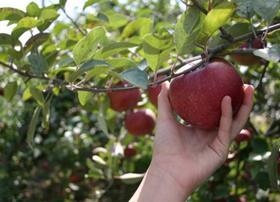
Expectations are high for the coming European apple season, in stark contrast to last year, when the majority of the continent experienced major declines in production.
“Last season’s apple crop in Europe was one of the smallest seen in the last few years,” recalls Dominik Wozniak, managing director of Polish co-operative Rajpol. “Naturally this meant that no one in Europe experienced any problems selling what they had, while the prices were also very good. At the beginning of the new European season, there are no apples left over in storage from the previous season, either in Poland or elsewhere in Europe. This is good news for the coming campaign because it means that we can start selling from the beginning.”
Such optimism comes in spite of the fact that the European crop could be two to three weeks late this season, a result of inclement weather during the May-to-June period, which was marked by cold, windy and rainy conditions.
The delayed start to the European harvest also puts added pressure on the latter part of the season in September, when the days become shorter and daylight hours become a potential issue.
“It is still approximately two months until we see the harvest of later varieties like Cox and Gala,” says Adrian Barlow, chief executive of English Apples and Pears, “and a lot can go wrong in that space of time, as it is so weather-dependent.”
As for the European Commission’s proposal to lower the MRL for post-harvest treatment DPA from 0.5ppm to 0.1ppm, Barlow expresses concern that imports of apples from the US and the Southern Hemisphere may be reduced, especially during the summer period.
“The last thing we want is for there to be a shortage,” he says. “It would be bad for the whole industry if consumer demand cannot be met. I’m pleased to hear that these countries are now talking about meeting this new MRL protocol rather than walking away from the European market altogether.'



